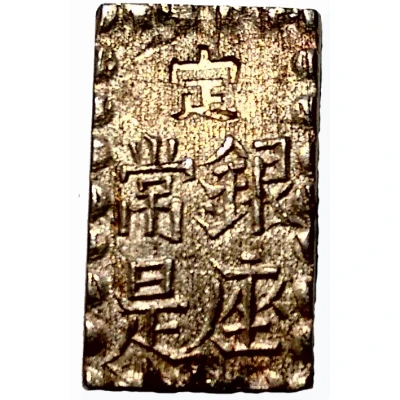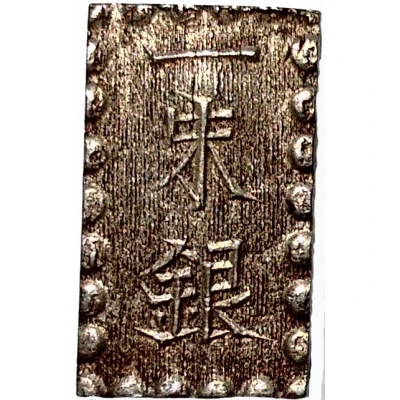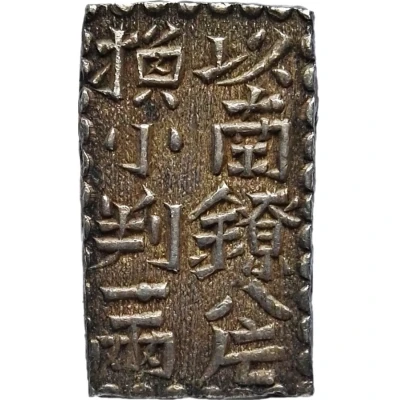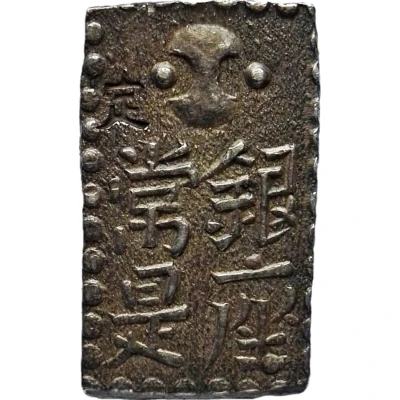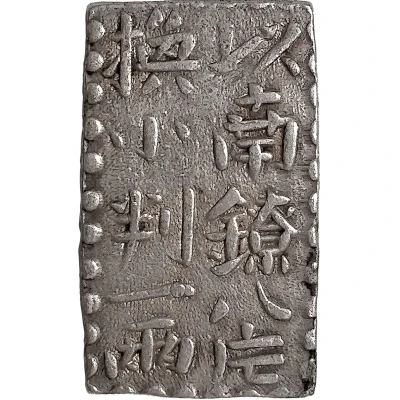
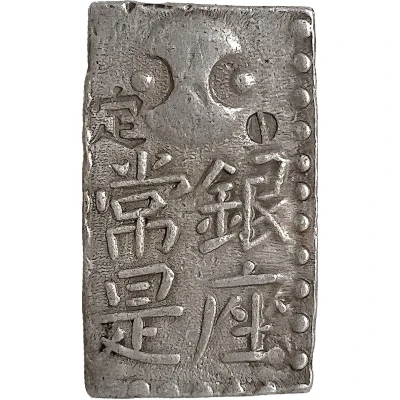

2 Shu | ⅛ Ryō "Ko-Nanryō Nishugin" ND
| Silver (.978) | 10.19 g | - |
| Issuer | Japan |
|---|---|
| Emperor | Go-Momozono (1771-1779) |
| Type | Standard circulation coin |
| Years | 1772-1824 |
| Value | ⅛ Ryō |
| Currency | Ryō (1595-1874) |
| Composition | Silver (.978) |
| Weight | 10.19 g |
| Size | 27.5 × 16.5 mm |
| Shape | Rectangular (irregular) |
| Technique | Hammered, Countermarked |
| Orientation | Medal alignment ↑↑ |
| Demonetized | Yes |
| Updated | 2024-10-05 |
| Numista | N#27000 |
|---|---|
| Rarity index | 87% |
Reverse
A Fundō (symbol for official weight) with an incuse stamp 定 to the left of it over 4 kanji surrounded by pearl border.
Script: Chinese (traditional, regular script)
Lettering:
定
常銀
是座
Translation:
Guaranteed
Ginza (Silver Mint)
Jōze (Mint Official)
Edge
Plain or with filing, with incuse sakura (see comments)
Comment
古南鐐二朱銀
DHJ# 9.71 : 27.5 x 16.5 mm
DHJ# 9.73 : 25.5 x 15 mm
Meiwa type : Top left and right stroke of 常 are curved, edge is smooth (see sample coin)
©fairfield
Kansei type : Top left and right stroke of 常 are straight, faint filing marks on edge
© Heritage Auctions
Variants in calligraphy, sakura stamping and intermediate size types are known to exist.
Large sakura hallmark ("gokuin") variant:
©fairfield
A control stamp (定) is usually present on the left side of the fundo symbol.
Unusual specimen with coin orientation and full pearl border without the control stamp.
© Heritage Auctions
Interesting fact
One interesting fact about this coin is that it was issued during the reign of Emperor Kōkaku, who was known for his efforts to modernize and centralize the Japanese government, and this coin was part of a broader effort to standardize currency and promote trade.
Price
| Date | Mintage | VG | F | VF | XF | AU | UNC |
|---|---|---|---|---|---|---|---|
| ND (1772-1788) | 30655040 | - | - | - | - | - | - |
| ND (1800-1824) | 16809296 | - | - | - | - | - | - |
Values in the table are based on evaluations by sales realized on Internet platforms. They serve as an indication only for 2 Shu | ⅛ Ryō "Ko-Nanryō Nishugin" ND (1772-1824) coin.
